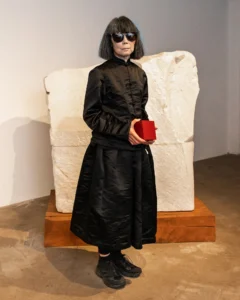The Burden of Disposal
We are beings who love to collect things we fancy, things that have given us sweet memories, and things that make us look good, important, or powerful. Then there are those things that we collect and store in the hope that we will wear them or use them at some point in time – maybe when we lose some more weight or when the kids are bigger or when we go out with friends or take that international trip. Do they happen? Maybe not, and yet we collect things.

There is no judgment here. Some people like stuff, some people don’t, some collect and some don’t. There are various reasons people collect. Some have been depraved, so they feel like compensating by buying more, maybe for a rainy day or to know abundance.
Some like the beauty of things and they want to hold on to it forever. Some like to show it off to the world, that they could afford it or that they have a refined taste for things or they simply love to be surrounded by things they love. Whatever the reason, over time, homes can get crowded.
Then there are simple things like plastic containers, plastic covers, and cardboard boxes among other ordinary things, that are saved for some purpose someday, which may or may not happen. I am guilty of collecting all the letters I have received since I was an 8th grader. Mind you, I was a voracious letter writer and receiver. I have a small sack of letters stored in the loft, my most precious treasure. There is so much love in them that I could not get to throw them away.
A few years ago, I came across the concept of minimalism and disposal. The habit of buying very little and only what was needed was already inherent in me. I also followed the tenet that if I did not use something for more than 6 months, it would be given away to someone who could use it.
We did window shopping for a year while our apartment was getting ready. When it was ready to be occupied, we planned and bought only what was needed in that limited space. Since then, we have not added much to it knowing that having space was more important than cramping. Despite all that, the concept of minimalism struck a chord. And then I read about the idea of the burden of disposal.
It threw light on what we are hoarding and how much we are hoarding. When we pass on, what are we leaving behind for our children to sort and dispose of? We may have sentimental value for certain things and we may keep it for our children. Our children will not have the same sentimental attachment to those things. Even the land we amass, 100 years later, would be in a different person’s name. Nothing remains. Not even the memory of us. Maybe it will be there till our grandchildren if we have had a few and if we have kept in touch. After that, no one would even know us. Do we know our great grandmother?
Will our children use the house we are living in now? Maybe or maybe not? Will they use the furniture we are using now? Sensibilities will change, so will the styles and so will those pieces of furniture we lovingly collected. How many sarees would a woman have?
How many of our sarees would our daughter or daughter-in-law use, after we are gone? Would they use it? What would they do with all of them? Give it away to the house help, charity, or burn them? So, it is with everything we buy more and more.
Imagine the plight of our children when they stand in a house full of things after we are gone, not knowing what to do and where to begin. They would, hopefully, have their own homes, and none of what we have had matches their décor. What would they then do to dispose of all these? It would be the burden of disposal.
What we can do is, once we cross a certain age, or when our children fly off from the nest, we can slowly slow down the process of buying and start the process of giving away. Let there be more space for energy, air, and light to flow freely. Zero in on a few things the children like and would take along with them. Give away things we have not used for 6 months. Give away things we bought hoping to use when we lost weight or some other occasion. Start using stuff we had kept for guests and give away what we were using instead. Let our wardrobes start breathing and buy only when necessary. Gift your precious clothes and jewelry to people you would love to give them away to and those who will take care of them the way you have cared for them. It is a slow process. It can be painful to let go of things. Start small. Purchase lesser. Give slowly. Once we start learning to let go of things, we hold dear, it frees us so much. And more importantly, it will free our children from the burden of disposal.
Deep down in me, I have prepared myself to let go of that sack of letters. And it feels peaceful.
Sajitha Rasheed is a Relationship workshop facilitator and the Founder and Chief Mentor of Mind Mojo









